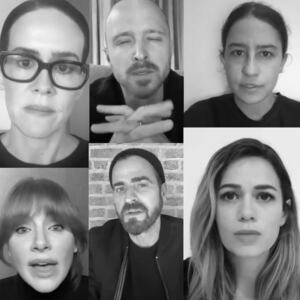On Saturday, two days into the MLB’s skeletal 2020 season, Fox Sports debuted a feature few asked for: virtual fans. Facing a schedule that dropped from 162 games to just 60, held in stadiums without crowds to boo, applaud, or smooch on the jumbotron, Fox announced via tweet that they had just the fix: a partnership with SportsMEDIA Technology and Silver Spoon Animation to insert the grainy, Sim-like visages of shrieking baseball lovers onto home screens everywhere, further blurring the line between reality and dystopian role-playing game. As one Reddit pundit put it: “Why.”
While sports negotiate their return to televisions, Fox isn’t the only entity to grapple with stadium space. When the Chinese Professional Baseball League restarted its season in April, stands at Taiwan’s Taoyuan Baseball Stadium filled its seats with mannequins, cardboard cutouts, and drum-playing robots. (“The faux-fans were dolled up in real hats and shirts of the home team the Rakuten Monkeys,” the New York Post wrote, “some pointing toward the field and others holding signs over their heads—via zip ties around their plastic wrists.”) And not long after the sport restarted in Japan on June 19, the Fukuoka SoftBank Hawks unveiled a new kind of cheerleader: a fleet of 20 Teletubbyish robots to dance, sing, and shout praise from their abdominal TV screens (up to 5,000 real fans were allowed as well; shouting was banned). But where those skewed playful, almost human in their scattershot, impromptu aspect, Fox found a more Stepford Wives-style solution.
The announcement came with an 18-second trailer previewing how the stunt may work. The manic short film zooms between shots of live-action players and the animated torsos of their fake fans. As the stadium fills, the fans pop into place, before cheering, booing, and doing the wave under a jarring score combining both a robust trumpet section and shredding electric guitar. “The original concept sounds like something that would never happen—pie in the sky,” FOX Sports executive vice president Brad Zager told the New York Post. “We were dead set on trying to make the broadcast with no crowd feel as authentic and organic as possible. We want to give people an escape.” (One side effect of this: the fans do not wear masks).
The project was a months-long collaboration, says Laura Herzing, executive producer at Silver Spoon, the motion-capture and augmented-reality company commissioned to execute the plan. It began this spring with a high-quality scan of each ballpark, taking stock of each seat to overlay a fan into later. They drew the bodies—faceless non-player characters (NPCs) wearing generic outfits in their team colors (skin tone is randomized; gender is roughly split). The fans are not drawn from real people, but do get their movements from a few Williamsburg gesture models. “We have a pool of talent in New York that we pull from,” Laura said. There’s a non-zero chance you could pass one on the street and recognize their wave: “Perhaps, if you were extremely observant.”
The simulation operator can determine how dense or light to make the crowd, and change it as the game goes on. “If it’s a blowout and you want to thin the crowd, the director has the ability to make that call,” Herzing said. Fans only exist in on-mode and off-mode, no hot dog-buying mode, or taking-a-whiz mode. So to reduce the crowd size, most operators will turn fans off during the commercial break, she said, or they would just disappear from the screen. “I think the ‘going to get a hot dog’ might be version 2.0 enhancement,” Laura said.
While on though, the virtual fans have about 500 actions each rotates through randomly. “We have everything from an idle state sitting, watching with natural movements,” she said. “You can control what percent are standing. They can cheer. They can boo. They can do the wave. You can control how many fans are reacting—positive and negative—and how intense that reaction is.” None of these movements are especially funny. “We haven’t really built in anything too off the wall or odd,” she said. Though there are a few Easter eggs. “One of the biggest points of discussion was what percentage of the crowd should be looking at their cellphone,” she said. She didn’t know the percentage they chose.
These fake fans never arrived in the uncanny valley, Herzing argued, because they’re so clearly unreal (“If you were to get super close-up, it would be obvious that these are not real people.”) But without them, she said, the sight of an empty stadium would be unnerving, “a little abrupt.” The goal wasn’t to trick people into believing the fans were real, but to emulate the sense of togetherness. “It’s like watching a sitcom without a laugh track or an audience providing laughter—the comedy falls flat without that reinforcement,” she said. “We’re trying to create that sensory reinforcement.”
There may be some metaphor in here for American handling of the COVID-19 crisis (superficially fine, howling chaos within!). But the project seems more bewildering than sinister. Just who is the audience for an animated audience? Will this last the whole season? Or will it die out an oddity, like Will.i.am’s election night CNN hologram, debuted once to resounding indifference, and never seen again?


